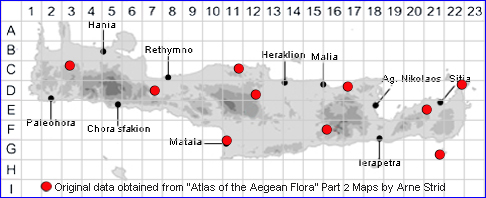

SPECIES DESCRIPTION
OROBANCHE GRISEBACHII
Family and Genus:- See- OROBANCHACEAE/Sect. OROBANCHE/O. MINOR
Common Names:- None
Homotypic Synonyms:- Orobanche minor var. grisebachii, Orobanche minor
subsp. grisebachii.
Meaning:- Orobanche (Gr) Legume-strangler. (one species is parasitic on
legumes).
Grisebachii (L) For Heinrich Rudilf August Grisebach (1814-79)
Professor of Botany at Gottingen.
Stems:-
1) 20-50 cm. swollen at the base. yellowish-white, densely glandular-puberulent and
somewhat tomentose.
Leaves:-
1) Oblong-lanceolate, glandular-pubescent.
Flowers:-
1) Inflorescence, 5-25 cm, cylindrical, usually dense, many-flowered.
2) Bracts, 10-22 mm,. oblong, acuminate, equalling or exceeding the flower.
3) Calyx segments, entire or deeply and unequally bidentate.
4) Corolla, 12-15(-20) mm, tubular, whitish to yellowish, glandular-pubescent.
a) upper lip, entire or plicate-emarginate.
b) lower lip, lobes rounded or subacute, with crenulate-dentate margin, glabrous.
5) Stamens, inserted 3-4 mm above the base of the corolla tube, long-pilose in the
lower half.
a) anthers broadly ovate.
b) filaments inserted 3-4 mm above the base of corolla.
6) Stigma violet or purplish, rarely white.
Key features:-
1) Bracts, 10-22 mm.
2) Stamens, inserted 3-5 mm above the base of the corolla tube.
3) Corolla, 12-15(-20) mm, tube, glandular-pubescent glabrous distally.
Host genera:- Members of Compositae, Leguminosae and Campanulaceae.
Habitat:- Dry open shrubby vegetation, fallow fields and open woodland, 0-1 000 m,
Distribution:- On Greek territory almost restricted to the Aegean area. -
Widespread in Anatolia, extending to Palestine and Egypt. Sparsely scattered
across Crete,. Rare
Flowering time:- April-June
Photos by:-